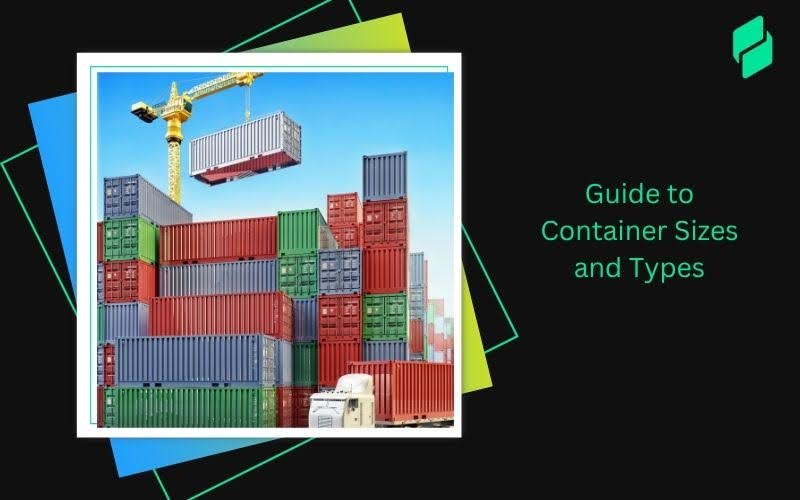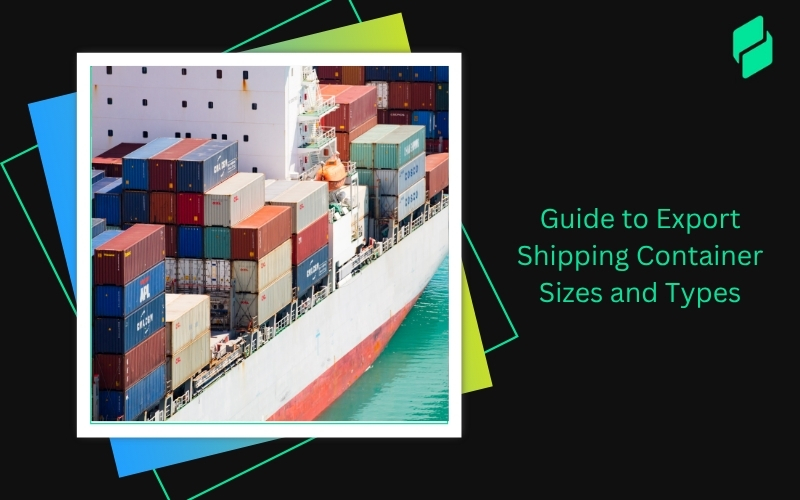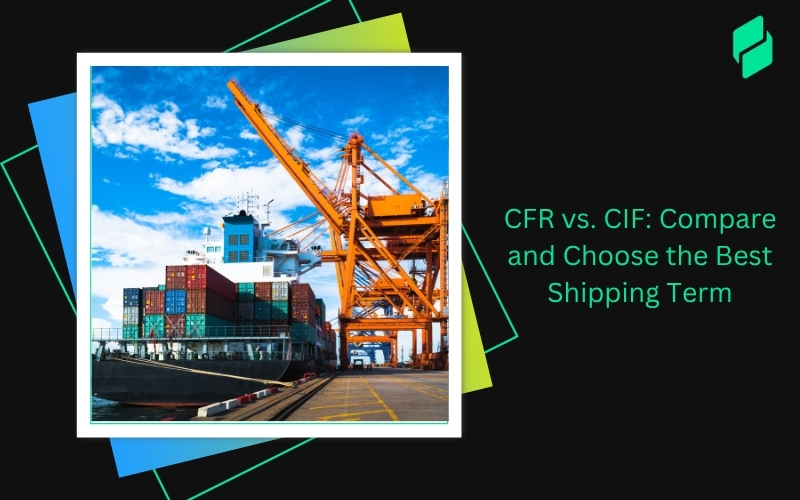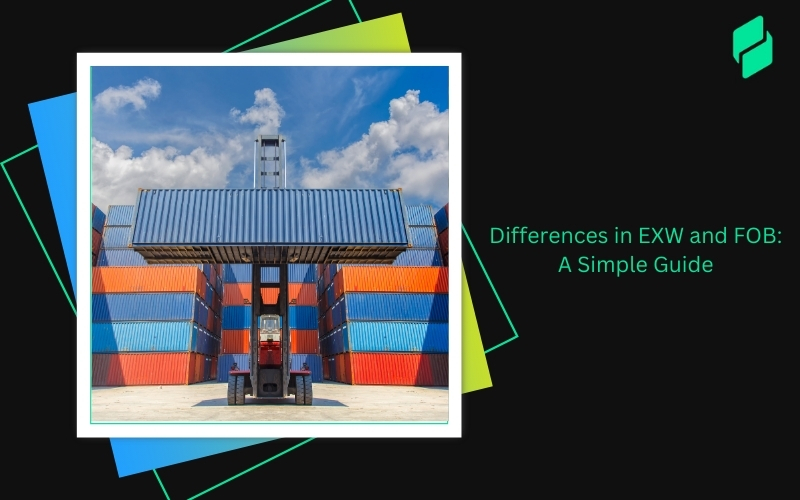Optimize your business: use unlimited savings with Pazago fulfilled now!
Get Started ->When preparing to ship goods internationally, selecting the right container size and type can significantly impact cost, safety, and efficiency.
With multiple options available, ranging from standard 20-foot containers to specialised refrigerated or open-top units, it’s essential to determine what works best for your cargo. According to the UNCTAD Review of Maritime Transport 2024, the global shipping fleet grew by 3.4% in 2023, reaching a total cargo capacity of 2.4 billion deadweight tons. This growth was primarily driven by container ships and liquefied natural gas (LNG) carriers, although bulk carriers and oil tankers continue to hold the largest share of the fleet.
In this blog, you will explore different shipping container sizes and types, helping you make the most informed choice for your logistics strategy.
Understanding ISO Container Size and Type Codes
The ISO size and type code provides a standardized way to quickly identify the size, type, and key characteristics of a shipping container. These codes are displayed together on the container to ensure clarity and consistency.
The owner code, equipment category identifier, serial number, and check digit must be marked with characters at least 100 mm (4 inches) high. All markings should be proportionate in width and thickness, durable, and in a colour that clearly contrasts with the container’s surface.
Compliance with these marking requirements is mandatory to facilitate proper handling and identification during transport.
Why Choosing the Right Shipping Container Matters
Every shipment has its unique size, weight, and handling requirements. That’s why choosing the correct container size and type is not just a logistics formality, but a crucial step in efficient cargo planning.
Here’s how the right container choice impacts your operations:
- Cost efficiency: Using a container that’s too large means you pay for unused space. One that’s too small may force you to split shipments, increasing handling and transportation costs.
- Cargo safety: Fragile, oversized, or perishable goods often require specific container types such as open-top or refrigerated containers. The wrong match can lead to damaged goods and financial loss.
- Faster transit and fewer delays: Standard container sizes streamline port handling and customs checks. Choosing non-standard containers without proper planning can result in extra fees, rejections, or shipment delays.
According to UNCTAD, more than 80% of the volume of global trade in goods is carried by sea, and a large share of this is moved using containerised transport. This makes container knowledge essential for anyone involved in global trade.
Also Read: Differences and Uses of Various Shipping Container Sizes and Types
Now, let’s look at the standard container sizes you’ll encounter most often.
Standard Shipping Container Sizes
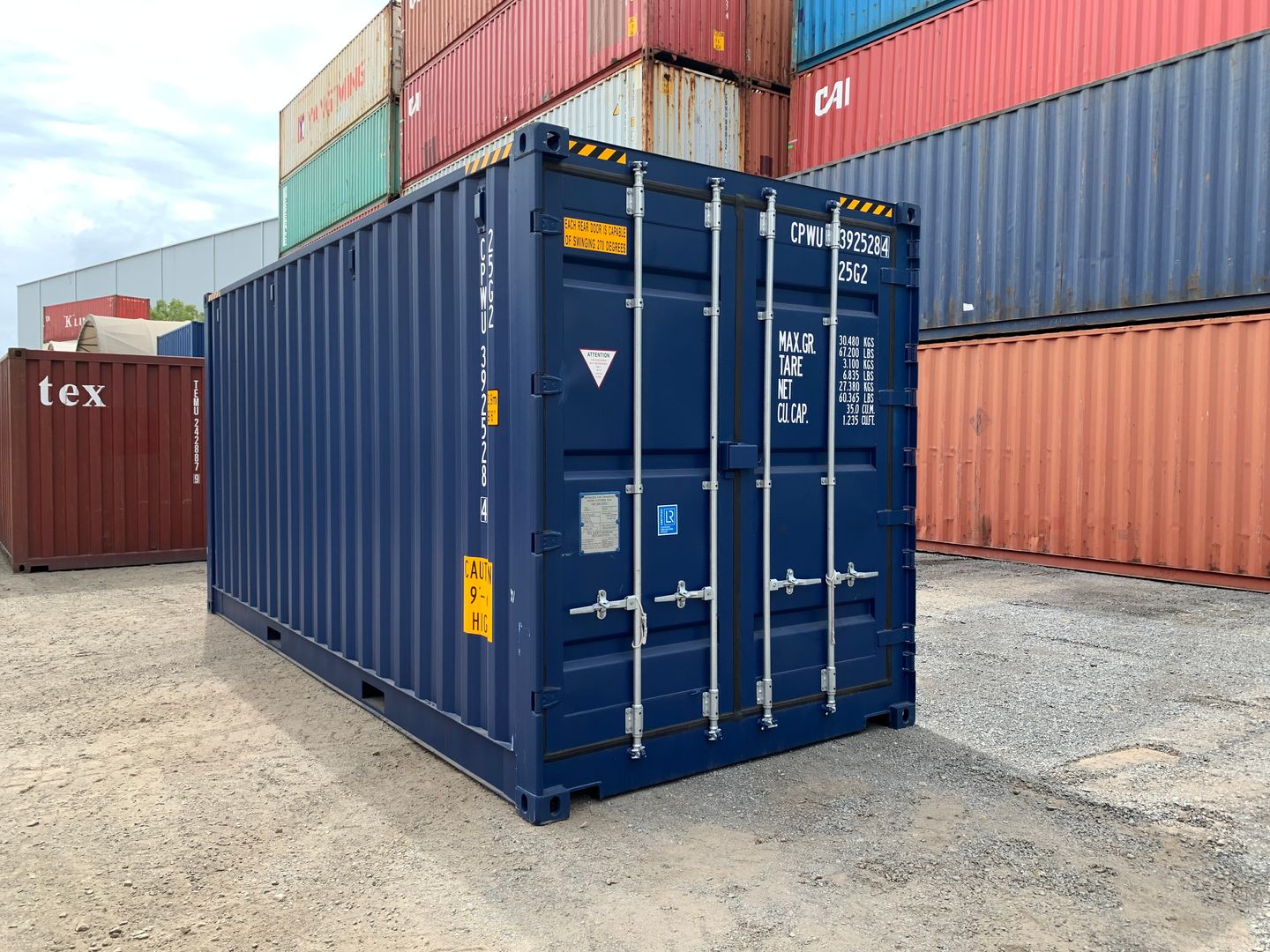
When it comes to container shipping, three container sizes are most commonly used. Each serves different purposes based on cargo volume, weight, and type.
1. 20-Foot Container (TEU – Twenty-foot Equivalent Unit)
Ideal when weight is the limiting factor more than volume.
- External Dimensions: 20 ft (L) × 8 ft (W) × 8.6 ft (H)
- Interior Dimensions: 17'9" × 7'5" × 7'5"
- Door Opening: 7'5" × 7'5"
- Internal Capacity: ~33 cubic meters (1,165 cubic feet)
- Volume / Capacity: 59.3 m³ / 2,093.3 cu ft
- Max Payload: ~28,000 kg (61,700 lbs)
- Tare Weight: ~2,200 kg (4,850 lbs)
- Best For: Heavy and dense cargo such as machinery, metals, cement, or packaged goods.
2. 40-Foot Container (FEU – Forty-foot Equivalent Unit)
Doubles the volume of a 20-foot container but not the weight allowance, making it cost-effective for lighter cargo with more volume.
- External Dimensions: 40 ft (L) × 8 ft (W) × 8.6 ft (H)
- Interior Dimensions: 37'9" × 7'5" × 7'4"
- Door Opening: 7'5" × 7'4"
- Internal Capacity: ~67.5 cubic meters (2,390 cubic feet)
- Volume / Capacity: 67.3 m³ / 2,380 cu ft
- Max Payload: ~26,500 kg (58,420 lbs)
- Tare Weight: ~3,800 kg (8,380 lbs)
- Best For: Bulkier cargo such as furniture, textiles, or appliances.
3. 40-Foot High Cube Container
Offers an extra foot of vertical space, useful when standard containers are too tight.
- External Dimensions: 40 ft (L) × 8 ft (W) × 9.6 ft (H)
- Interior Dimensions: 39'5" × 7'8" × 8'10"
- Door Opening: 7'8" × 8'10"
- Internal Capacity: ~76.4 cubic meters (2,700 cubic feet)
- Volume / Capacity: 76.3 m³ / 2,694.5 cu ft
- Max Payload: ~26,000 kg (57,320 lbs)
- Tare Weight: ~4,000 kg (8,820 lbs)
- Best For: Lightweight but voluminous cargo such as electronics, cotton bales, or insulation material.
4. 40-Foot Open Top Container
Oversized cargo or tall goods that need to be loaded from the top, such as machinery or logs.
- External Dimensions: 40 ft (L) × 8 ft (W) × ~7.8 ft (H)
- Interior Dimensions: 39'5" × 7'9" × 7'8"
- Door Opening: 7'9" × 7'8"
- Volume / Capacity: 66.7 m³ / 2,356 cu ft
5. 45-Foot High Cube Container
- External Dimensions: 45 ft (L) × 8 ft (W) × 9.6 ft (H)
- Interior Dimensions: 44'5" × 7'8" × 8'10"
- Door Opening: 7'8" × 8'10"
- Volume / Capacity: 86 m³ / 3,037 cu ft
- Best For: Large shipments needing extra length and volume with high cube benefits.
Quick Comparison of Standard Shipping Container Sizes
Also Read: Calculating Chargeable Weight for Air Freight Shipments
Next, let’s look at the various types of shipping containers and how each serves different cargo needs.
Common Types of Shipping Containers and Their Uses
Shipping containers come in various types, each suited to specific cargo needs. Understanding the differences helps you choose the right container for your products, avoid damage, and control shipping costs.
1. General Purpose (Dry Storage) Containers
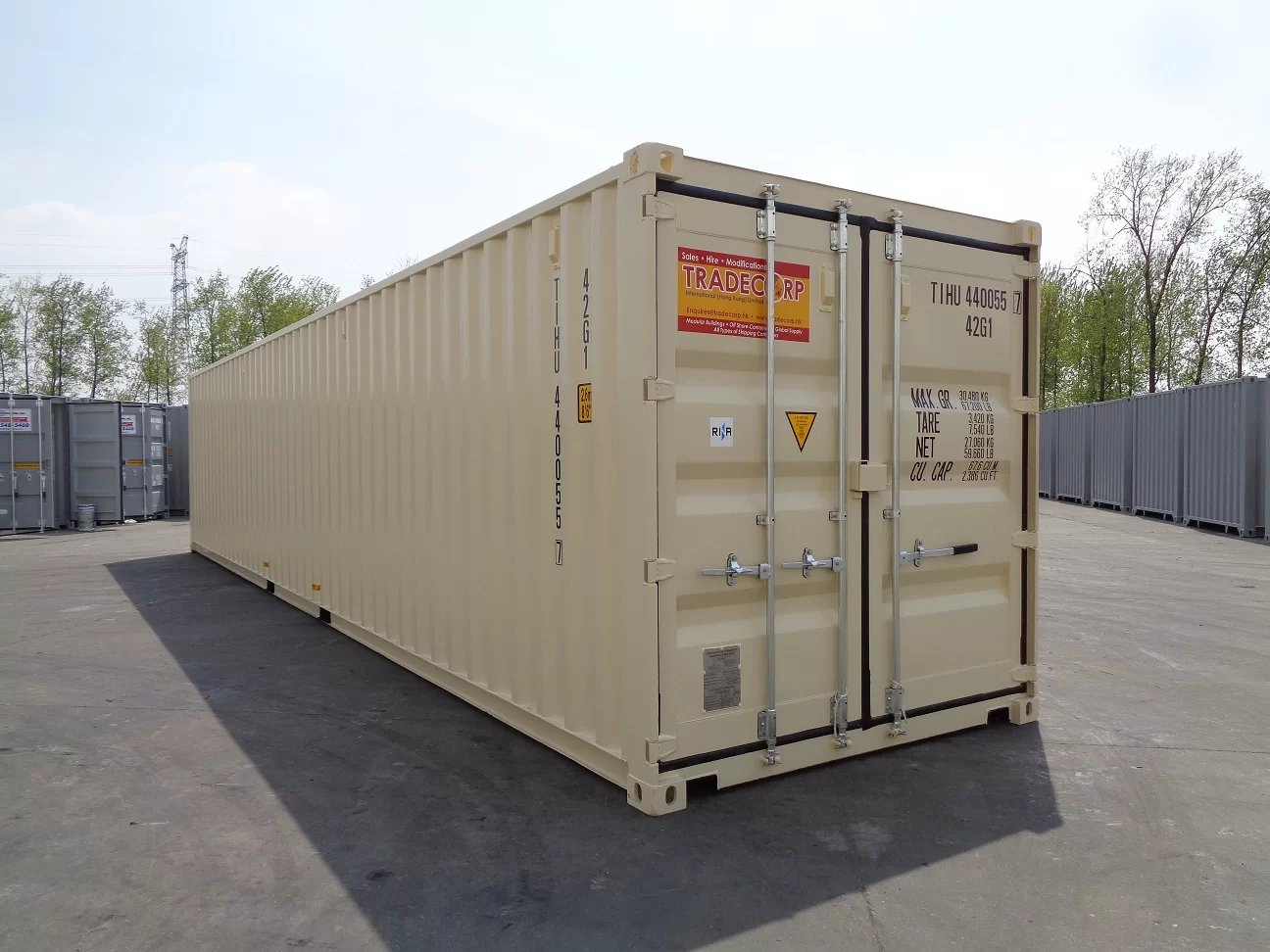
The most widely used container type for general-purpose shipping.
- Available Sizes: 20 ft, 40 ft, and 40 ft High Cube
- Size Note: The 20 ft container holds about 33 m³, while the 40 ft offers around 67.5 m³. High Cubes provide an extra foot of vertical space.
- What It’s Used For: Dry goods like electronics, textiles, packaged foods, furniture, and manufactured products.
- Real-World Relevance: If you're an exporter shipping non-perishable consumer goods or industrial materials, this is the default choice. They're stackable, secure, and compatible with most shipping routes and handling equipment.
Also Read: Understanding 20GP Container: Dimensions, Sizes, and Meaning
2. Refrigerated Containers (Reefers)
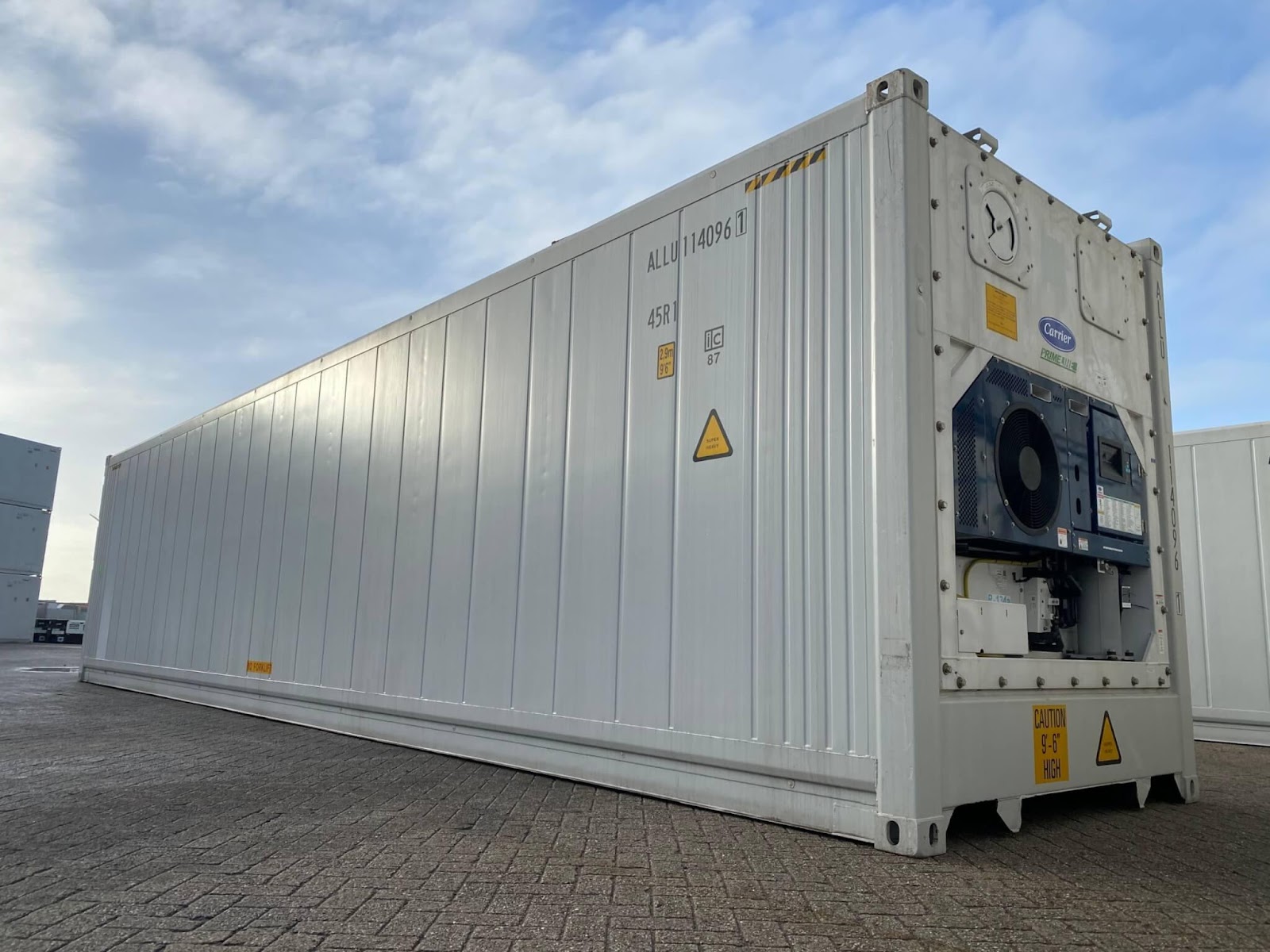
Equipped with temperature control systems to preserve goods that require a constant cold environment.
- Available Sizes: 20 ft, 40 ft, and 40 ft High Cube
- Size Note: Dimensions are similar to dry containers but include space for the refrigeration unit.
- What It’s Used For: Perishable food (meat, seafood, dairy, fruits), flowers, medical supplies, and pharmaceuticals.
- Real-World Relevance: Ideal for agricultural exporters and pharmaceutical companies. For example, Indian mango exporters often rely on reefers to maintain freshness during transit to the Middle East and Europe.
3. Open Top Containers
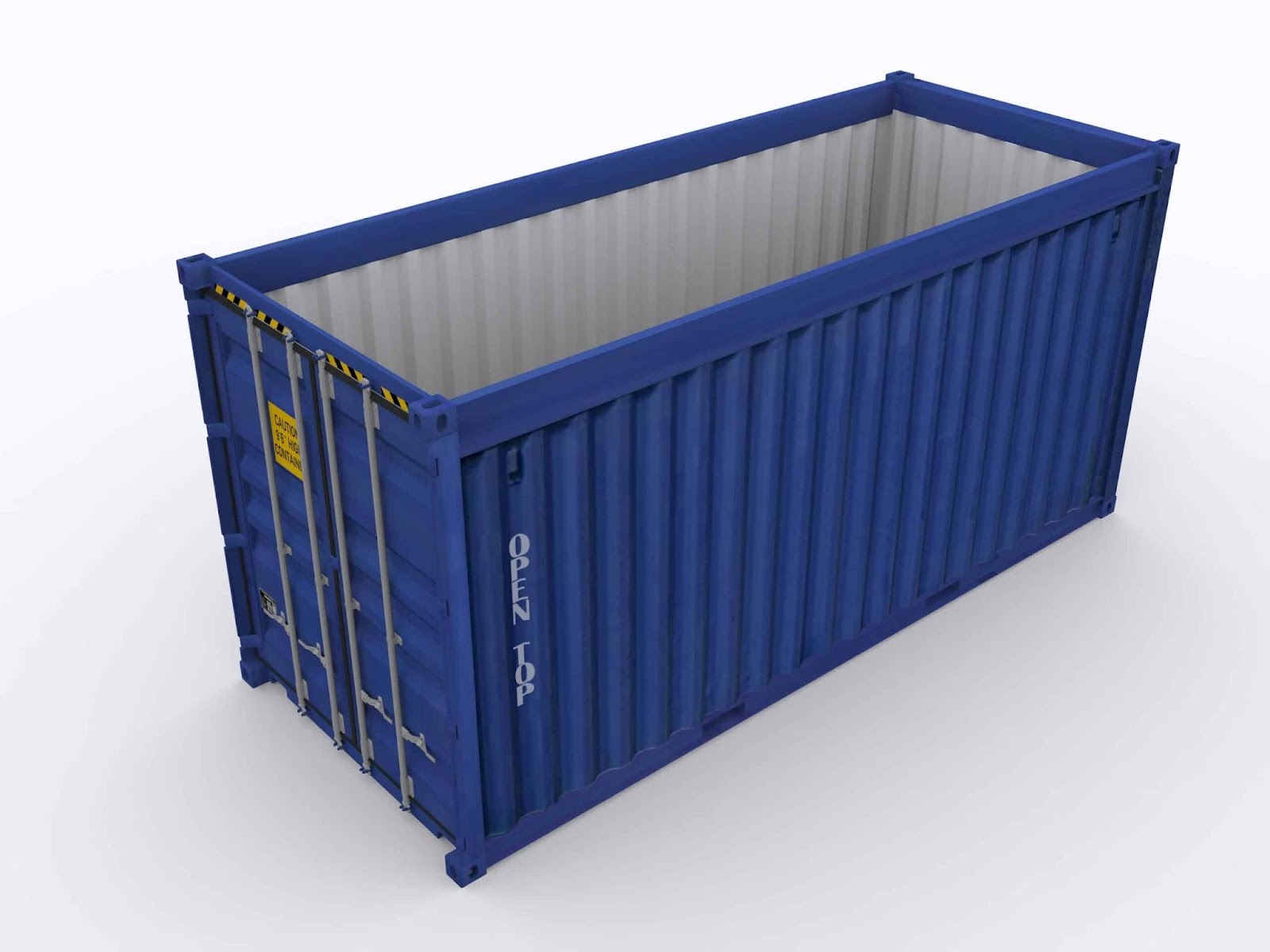
Similar in size to dry containers but have a removable top, allowing cargo to be loaded from above.
- Available Sizes: 20 ft and 40 ft
- What It’s Used For: Machinery, heavy equipment, logs, or items that are too tall to fit through standard doors.
- Real-World Relevance: Frequently used in the construction and mining sectors for transporting oversized gear like drills or cranes that can't be loaded sideways.
4. Flat Rack Containers
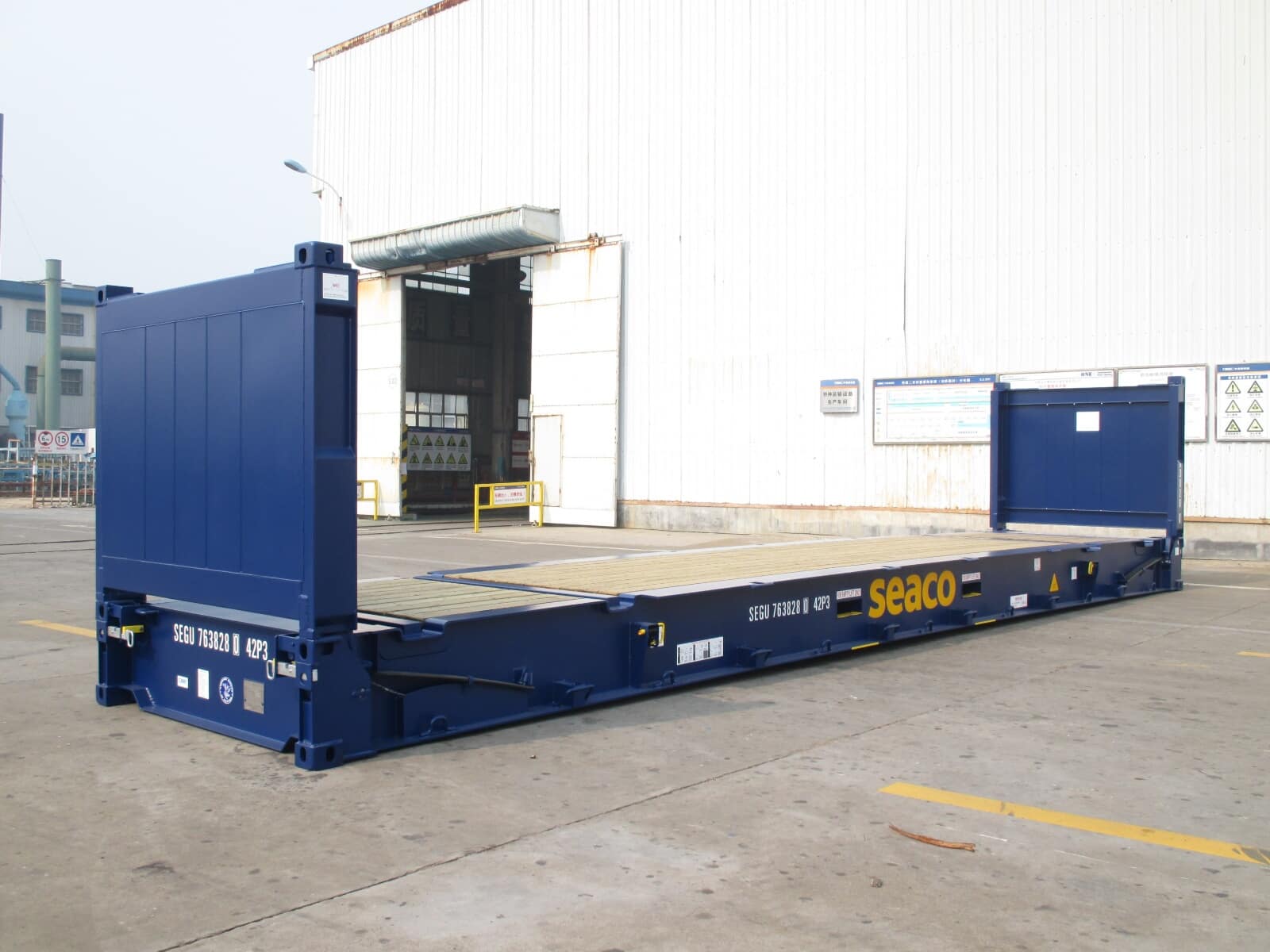
Feature collapsible sides or no sides at all, designed for oversized or heavy cargo.
- Available Sizes: 20 ft and 40 ft
- What It’s Used For: Boats, industrial vehicles, construction materials, pipes, or turbines.
- Real-World Relevance: Heavy machinery manufacturers or exporters of vehicles often use flat racks to ship products that exceed regular container dimensions.
5. Tank Containers
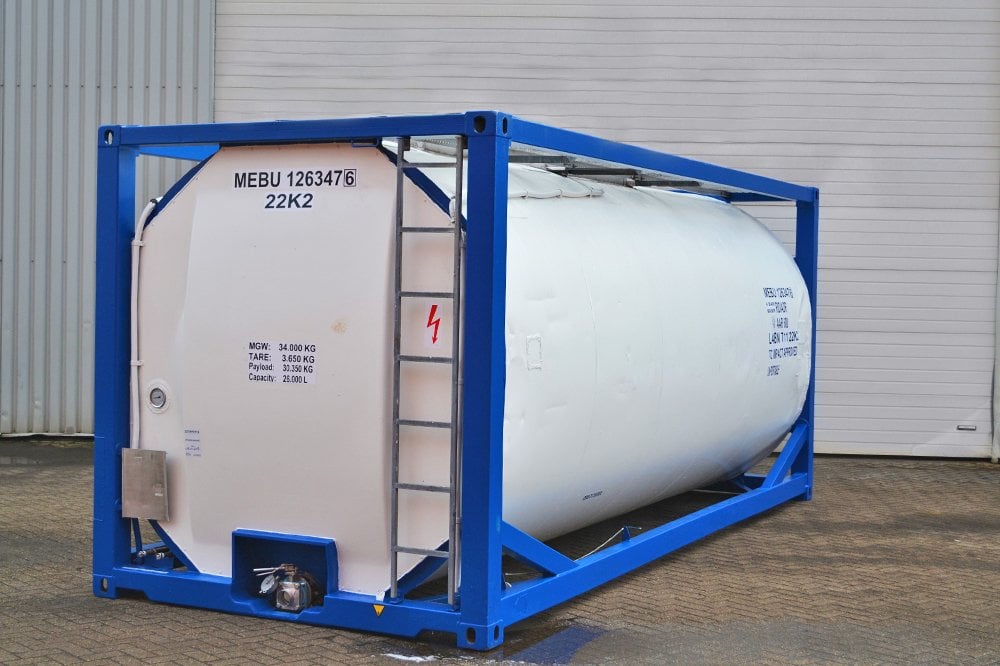
Cylindrical tanks mounted inside a rectangular steel frame, built to transport liquids.
- Available Size: Standard ISO 20 ft frame
- Size Note: Typically holds up to ~26,000 litres.
- What It’s Used For: Chemicals, oil, fuel, wine, milk, and other bulk liquids.
- Real-World Relevance: Used extensively by chemical suppliers and food-grade exporters. For example, Indian dairy brands exporting milk to Southeast Asia use insulated tank containers to maintain quality.
6. Ventilated Containers
(Image is only for reference, and we do not hold any rights on this)
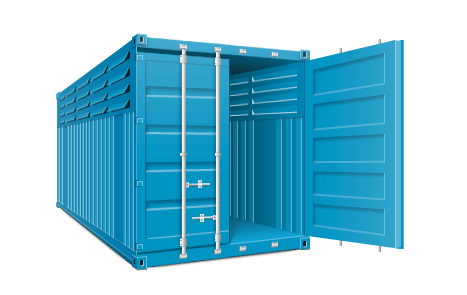
Designed with built-in airflow systems to prevent moisture accumulation and protect cargo from condensation.
- Available Size: 20 ft
- What It’s Used For: Organic commodities like coffee, cocoa, tea, or certain textiles that need air circulation.
- Real-World Relevance: Coffee and cocoa exporters use these containers to prevent mould formation, especially on long transoceanic voyages with variable humidity.
7. Insulated Containers
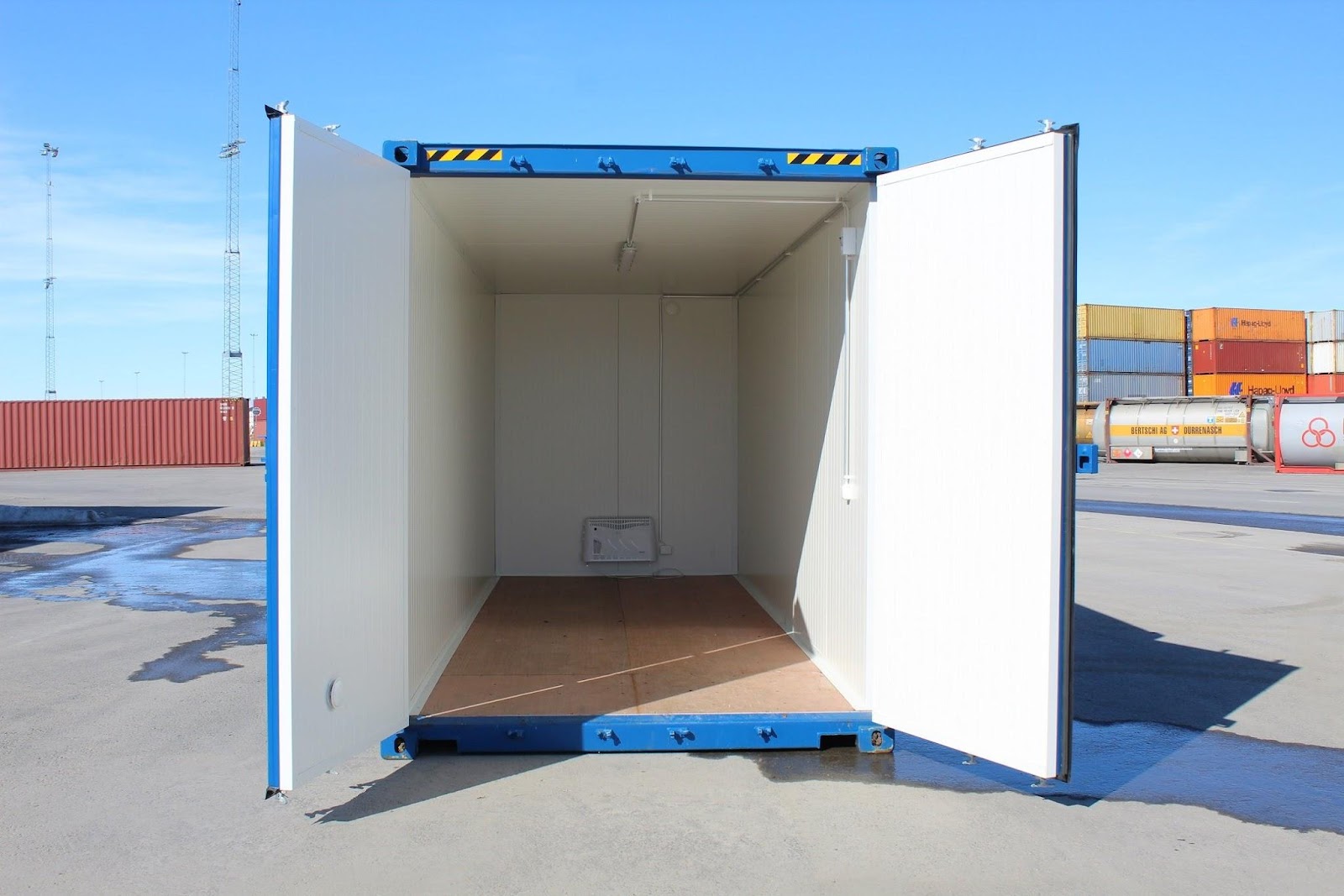
Provide thermal protection using insulation panels, but lack active temperature control systems.
- Available Sizes: 20 ft and 40 ft
- What It’s Used For: Items sensitive to temperature shifts, such as chocolates, vaccines, or speciality chemicals.
- Real-World Relevance: Frequently used for medium-duration transport where goods don’t require constant refrigeration but still need thermal protection, like chocolates going from Mumbai to Dubai in mild climates.
8. Platform Containers
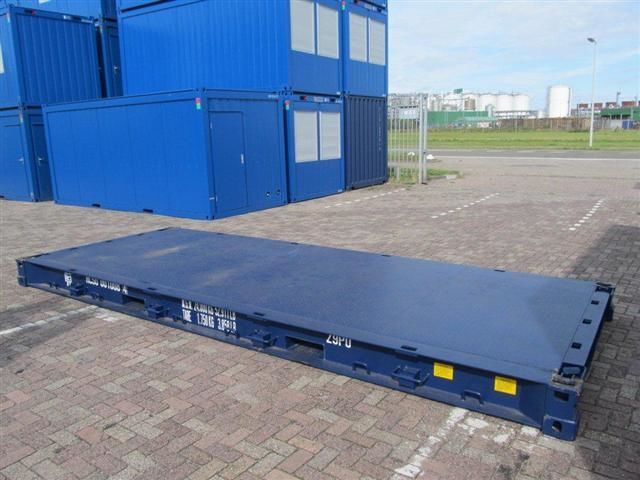
These are flatbeds with no side or roof walls.
- Available Sizes: 20 ft and 40 ft
- Typical Use: Extremely heavy or irregular-shaped cargo such as large vehicles or generators.
9. Hardtop Containers
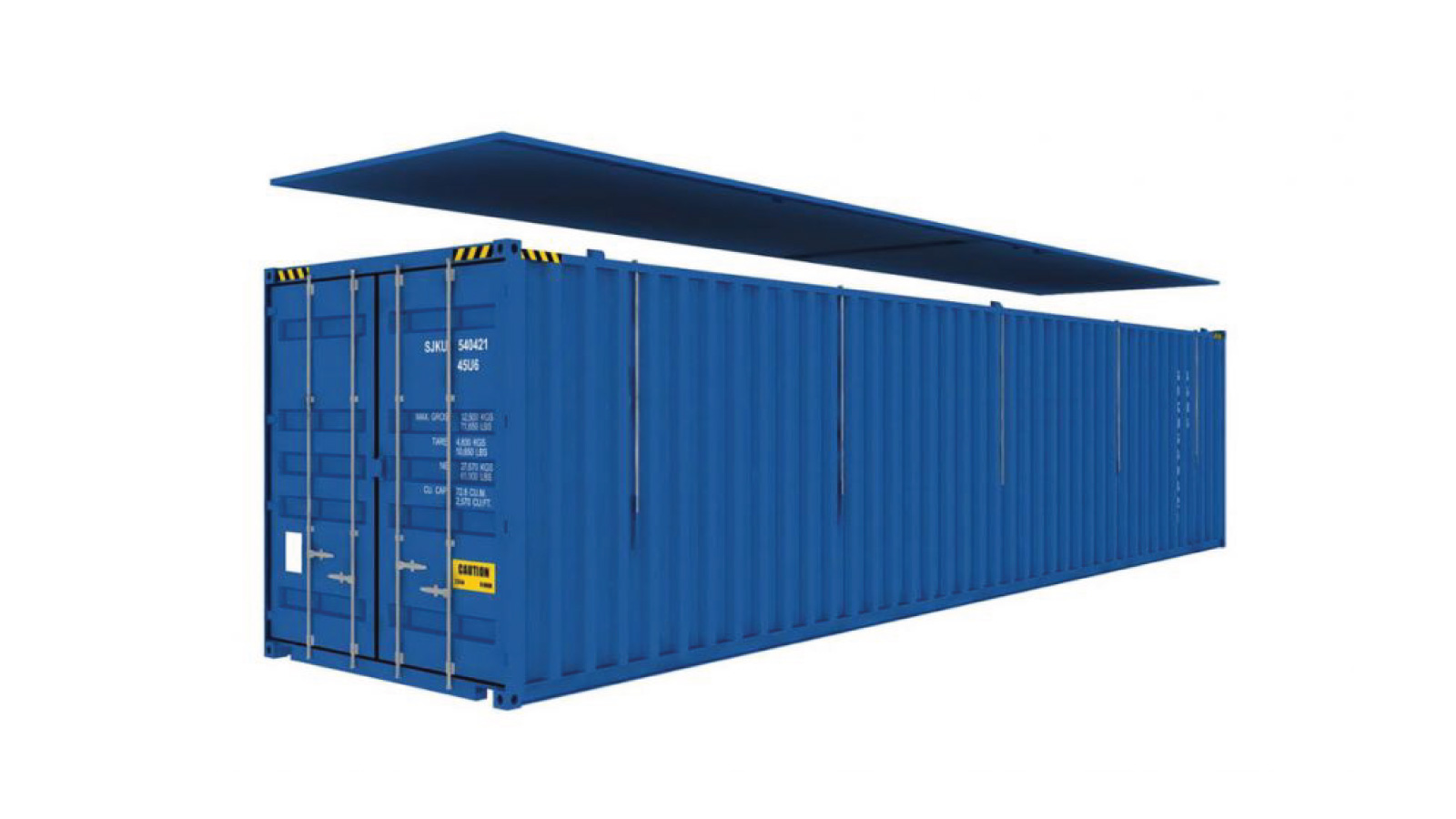
Similar to dry storage containers but with a removable steel roof.
- Available Sizes: 20 ft and 40 ft
- Typical Use: Cargo that needs top loading and extra protection, like heavy machinery in dusty environments.
10. Flexitank Containers
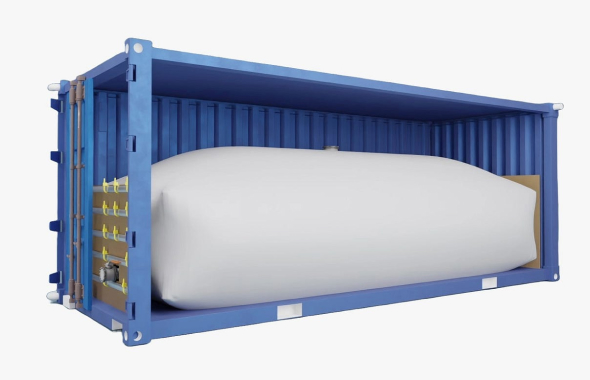
A 20 ft container fitted with a flexible, single-use inner tank.
- Available Size: 20 ft only
- Typical Use: Bulk liquids like edible oils, wine, juice concentrates, and some chemicals.
- Size Note: Capacity ranges between 16,000 and 26,000 litres.
Selecting the right container type has a significant impact on everything from product integrity and compliance to customer satisfaction. If you’re shipping across diverse routes or dealing with sensitive cargo, making the right choice here is critical for maintaining quality and timelines.
Also Read: Understanding Carriage Charges: Definitions, Types, and Examples
With the container types in mind, here are the key factors to consider when selecting the right container size and type for your shipment.
How to Choose the Right Container Size and Type
Selecting the correct container size and type is important for managing shipping costs, ensuring cargo safety, and meeting delivery deadlines. Here are the key factors to consider:
1. Cargo Volume and Weight
Start by measuring the total size and weight of your shipment. This helps determine the most space-efficient and cost-effective container.
- A 20-foot container is suitable for heavy cargo that takes up less space.
- A 40-foot container is better for light, bulky goods.
- A 40-foot high-cube container is useful when extra vertical space is needed.
Choosing the right size reduces unnecessary space and avoids weight-related issues.
2. Type of Goods
The nature of your cargo affects the type of container required.
- Use dry containers for general goods such as furniture or electronics.
- Choose refrigerated containers for perishable products like food and medicines.
- Open top or flat rack containers are suited for oversized or awkwardly shaped items.
- Tank containers are designed for liquids and chemicals.
Selecting the right type protects your goods and ensures proper transport conditions.
3. Route, Transit Time, and Climate
Your shipping route and destination weather conditions play a crucial role in selecting the right container.
- Ventilated containers help prevent moisture buildup during long or humid journeys.
- Insulated containers can help reduce temperature changes in extreme weather.
- Standard containers are usually suitable for multi-leg transport routes.
Making the right choice here helps maintain cargo quality throughout the journey.
4. Budget and Shipping Costs
Your budget will influence the container type you choose.
- Standard containers are more affordable and commonly used.
- Special containers like reefers or flat racks are more expensive.
- Full Container Load (FCL) is more cost-effective for large shipments
- Less than Container Load (LCL) is better when shipping smaller volumes.
Consider what works best for your cargo and your overall shipping budget.
5. Container Availability and Freight Rates
Availability and pricing change depending on location and time of year.
- Some containers may be harder to find during busy seasons.
- Freight rates vary by container type and destination.
- Using freight platforms can help you compare costs and find available options.
Planning early helps reduce costs and improves your chances of timely delivery.
Make smart container choices easier with Pazago. Access up-to-date data on container availability, freight rates, and shipping options to plan your shipments efficiently and reduce costs.
Once you’ve selected the right container, it’s essential to understand what factors affect its cost.
Factors That Impact Container Costs
Below are the main considerations that affect container pricing and logistics expenses:
- Container Type & Size: Larger or specialized containers (reefer, open top) cost more.
- Weight & Volume: Heavier cargo may need extra containers or incur fines.
- Route & Distance: Longer or complex routes raise shipping and handling costs.
- Seasonal Demand: Peak times can lead to higher prices due to low availability.
- Regulations & Fees: Customs duties and paperwork add to total cost.
- Handling & Insurance: Fragile or high-value goods increase handling and coverage charges.
- Fuel & Port Charges: Fuel surcharges and terminal fees affect final shipping costs.
Choosing the right container with these in mind helps manage your shipping budget efficiently.
In the next section, you will learn how to purchase a shipping container, enabling you to make the right choice with confidence.
How to Buy a Shipping Container
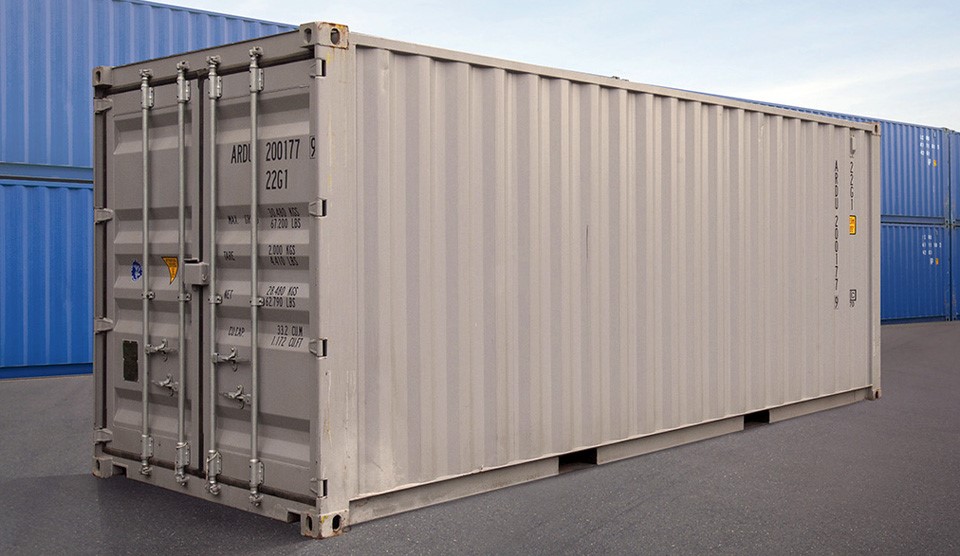
When purchasing a shipping container, follow these key steps to ensure you get the right container for your needs:
- Determine Your Requirements: Identify the container size, type, and condition (new, used, refurbished) based on your cargo and intended use.
- Set a Budget: Consider your budget, including purchase price, delivery costs, and any modifications needed.
- Research Suppliers: Look for reputable sellers or dealers with good reviews, transparent pricing, and verified container quality.
- Inspect the Container: If possible, inspect the container in person or request detailed photos and condition reports to check for damage, rust, or structural issues.
- Understand Delivery and Location: Confirm delivery options, transport costs, and container availability in your region.
- Review Documentation: Ensure the container has the necessary paperwork, including ownership and certification documents if required.
- Negotiate and Finalize Purchase: Discuss pricing, warranties, and terms before completing the purchase.
- Plan for Modifications or Maintenance: Consider any needed customizations, repairs, or maintenance after purchase.
To help you avoid costly errors, here are some common mistakes to watch out for when choosing and using shipping containers.
Common Mistakes to Avoid
When managing container shipments, even small errors can lead to costly delays, damaged goods, or compliance issues. Understanding what not to do is just as important as knowing what to do.
Here are some of the most common mistakes you should avoid when selecting or using a shipping container:
1. Overloading or Underutilizing Container Space
Overloading a container beyond its weight or volume capacity can result in:
- Fines or penalties from carriers and port authorities
- Higher risk of cargo damage during transit
- Rejection at the port or delays in customs clearance
Underutilizing a container means you’re paying for unused space, increasing your shipping cost per unit unnecessarily.
What to do: Always calculate the total volume and weight of your cargo. Match it with the container specifications to ensure you are making full use of the space without exceeding the limits.
2. Choosing the Wrong Container Type for Your Product
Selecting an inappropriate container can compromise your goods. For example:
- Perishable items packed in a dry container without refrigeration may spoil
- Large machinery shipped in a closed container may not fit or may require disassembly
- Fragile items placed in a non-insulated container may suffer damage from temperature or movement
What to do: Assess your cargo's size, fragility, temperature needs, and handling requirements. Select a container type that meets your specific needs, such as reefers for perishables or flat racks for heavy, oversized cargo.
3. Ignoring Regulatory and Documentation Requirements
Failing to follow international shipping standards can lead to:
- Delays in customs clearance
- Fines or the return of goods
- Rejection due to missing or incorrect paperwork
Certain countries have strict requirements on packaging, labelling, and container markings.
What to do: Verify documentation requirements for both origin and destination countries. Use standardised containers that comply with ISO norms and make sure all cargo is properly labelled and declared.
4. Not Accounting for Climate or Route Conditions
Some containers, like non-insulated ones, may not be suitable for routes with extreme weather or long transit times. Ignoring the effects of humidity, temperature, or sea conditions can damage goods.
What to do: Factor in the transit route and duration. If your cargo is sensitive to climate, opt for refrigerated or ventilated containers.
5. Assuming One Container Size Fits All
Using a 40-foot container for a small shipment can increase costs without any added benefit. Relying only on standard container sizes might not work for oddly shaped or high-volume items.
What to do: Consider both 20-foot and 40-foot containers, and evaluate options like high cubes or flat racks when needed.
By avoiding these mistakes, you can ensure smoother shipping operations, reduce the risk of damage, and better control your logistics costs. Always plan ahead, double-check requirements, and select containers based on your specific cargo and route.
Also Read: Logistics Invoice Template Format
How Pazago Simplifies Container Selection with Data-Driven Tools

Choosing the right container size and type can be tricky, but Pazago makes it easier with tools designed for clarity and efficiency. Through Pazago Intel, you get actionable insights to make informed container decisions based on cargo type, destination, and shipment priorities.
Here’s how Pazago supports your selection process:
- Pazago Intel Access: Stay ahead with market intelligence on freight trends, container availability, and size recommendations based on your cargo category and shipping lane.
- Real-Time Container Availability: Check the availability of various container sizes (20ft, 40ft, high cube, reefer, etc.) across major ports.
- Pre-Shipment Checks: Ensure your selected container meets international safety and packaging guidelines before dispatch.
- Expert Support: Consult Pazago’s team for help avoiding mismatches between container specs and cargo needs.
By using Pazago, you can streamline your container selection process, reduce unnecessary shipping costs, and safeguard your cargo throughout its journey.
Conclusion
Selecting the right shipping container size and type plays a critical role in ensuring your goods are transported safely, efficiently, and cost-effectively. Whether you're moving perishables, oversized machinery, or bulk liquid cargo, understanding container specifications and use cases can help you avoid costly mistakes and make better logistical decisions.
By carefully evaluating your cargo requirements, transit conditions, and available options, you can improve your overall shipping strategy and stay compliant with international trade regulations.
Start Shipping Smarter with Pazago
Pazago simplifies your trade process by giving you access to real-time freight insights, availability updates, and expert guidance. Whether you're a first-time exporter or managing high-volume global shipments, Pazago helps you make informed decisions, reduce costs, and streamline your operations.
FAQs
1. What is the most commonly used container for general cargo?
The 20-foot and 40-foot dry storage containers are the most widely used for general cargo such as furniture, electronics, textiles, and packaged goods.
2. When should I choose a high cube container over a standard container?
Choose a 40-foot high cube container if your cargo is light but voluminous, or when you need additional vertical space that a standard container cannot provide.
3. What type of container should I use for perishable goods?
Refrigerated containers (reefers) are ideal for perishable items like fruits, dairy, seafood, and medical supplies that require temperature control.
4. Can I use a regular container for shipping liquids?
No. Liquids should be transported in tank containers, which are specifically designed for safe and secure movement of liquids like chemicals, wine, milk, or fuel.
5. How do I know if my cargo needs a ventilated container?
If you're shipping goods prone to mould or moisture damage such as coffee, cocoa, or certain textiles, a ventilated container helps prevent condensation buildup.
6. Is it more cost-effective to ship full container loads (FCL) or less than container loads (LCL)?
FCL is more cost-effective if you have enough cargo to fill the container. LCL is suitable for smaller shipments, but it may result in longer transit times and additional handling.
7. What happens if I overload a container?
Overloading can lead to fines, damage to cargo, port rejections, or even accidents during transport. It’s important to stay within the container’s maximum payload limits.
8. How can Pazago help me with container selection?
Pazago offers tools and insights to help you compare container options, track availability, understand compliance requirements, and make data-backed shipping decisions tailored to your cargo type and route.


.png)


